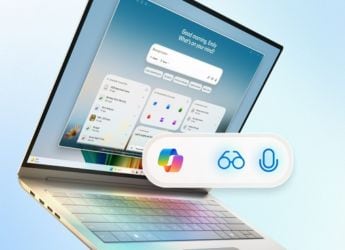- Home
- Science
- Science News
- NASA's Hubble Completes First Science Operation After 3 Week Hiatus
NASA's Hubble Completes First Science Operation After 3-Week Hiatus

Photo Credit: NASA/ ESA
NASA's Hubble Space Telescope has returned to normal operations and completed its first science observations after a three-week hiatus owing to a failed gyroscope.
The observations were of the distant, star-forming galaxy and were taken in infrared wavelengths with the Wide Field Camera 3 instrument.
The return to conducting science comes after successfully recovering a backup gyroscope, or gyro, that had replaced a failed gyro three weeks earlier, NASA said in a statement late on Sunday.
A gyro is a device that measures the speed at which the spacecraft is turning, which is necessary to help Hubble turn and lock on to new targets.
One of Hubble's gyros failed on October 5, and the spacecraft's operations team activated a backup gyro the next day.
However, the backup incorrectly returned rotation rates that were far in excess of the actual rates.
Hubble is now back in its normal science operations mode with three fully functional gyros.
Originally required to last 15 years, Hubble has now been at the forefront of scientific discovery for more than 28 years, said NASA.
"The team expects the telescope will continue to yield amazing discoveries well into the next decade, enabling it to work alongside the James Webb Space Telescope," the space agency added.
Get your daily dose of tech news, reviews, and insights, in under 80 characters on Gadgets 360 Turbo. Connect with fellow tech lovers on our Forum. Follow us on X, Facebook, WhatsApp, Threads and Google News for instant updates. Catch all the action on our YouTube channel.
Related Stories
- Samsung Galaxy Unpacked 2025
- ChatGPT
- Redmi Note 14 Pro+
- iPhone 16
- Apple Vision Pro
- Oneplus 12
- OnePlus Nord CE 3 Lite 5G
- iPhone 13
- Xiaomi 14 Pro
- Oppo Find N3
- Tecno Spark Go (2023)
- Realme V30
- Best Phones Under 25000
- Samsung Galaxy S24 Series
- Cryptocurrency
- iQoo 12
- Samsung Galaxy S24 Ultra
- Giottus
- Samsung Galaxy Z Flip 5
- Apple 'Scary Fast'
- Housefull 5
- GoPro Hero 12 Black Review
- Invincible Season 2
- JioGlass
- HD Ready TV
- Laptop Under 50000
- Smartwatch Under 10000
- Latest Mobile Phones
- Compare Phones
- OPPO Reno 15 Pro
- OPPO Reno 15
- Vivo Y500 Pro
- Realme GT 8 Pro Aston Martin F1 Limited Edition
- Huawei Mate 70 Air
- Moto G57
- Moto G57 Power
- Motorola Edge 70
- Asus ProArt P16
- MacBook Pro 14-inch (M5, 2025)
- iQOO Pad 5e
- OPPO Pad 5
- Noise Diva 2
- Noise Halo 2
- Acerpure Nitro Z Series 100-inch QLED TV
- Samsung 43 Inch LED Ultra HD (4K) Smart TV (UA43UE81AFULXL)
- Asus ROG Ally
- Nintendo Switch Lite
- Haier 1.6 Ton 5 Star Inverter Split AC (HSU19G-MZAID5BN-INV)
- Haier 1.6 Ton 5 Star Inverter Split AC (HSU19G-MZAIM5BN-INV)

















